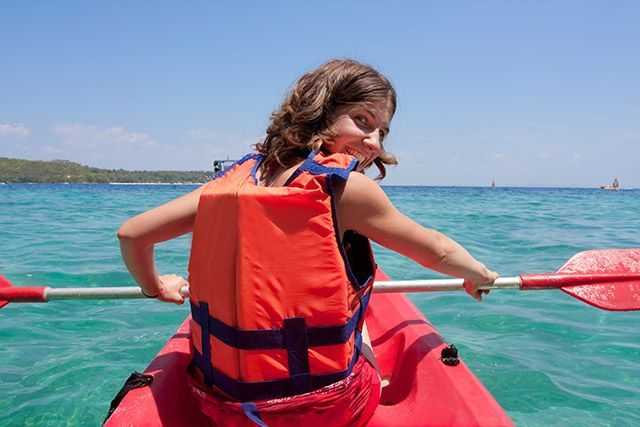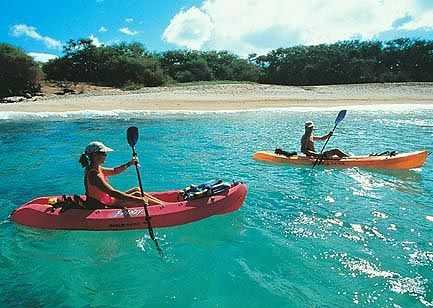
By Kayaking Salt Jack Roberts
Whenever local kayakers get together to hang out and tell war stories, someone, usually someone new to the area, eventually asks the question: “What are the best places to paddle around here?” The nominees generally include such old favorites as the Loxahatchee River and various sections of the Indian River and its side creeks. Scenic areas such as White City Park and Riverbend Park in Jupiter are sure to be mentioned. A conversation invariably ensues during which the various merits and hazards of these and many of the other inviting waterways of the Treasure Coast are described and compared. Opinions are shared and, plans for new trips are proposed. But if I am part of the group, my answer to the “Best Places” question is often received with skepticism and sometimes simply ignored. For me, the best place to paddle is the Atlantic Ocean.
Now, I can understand why many of my kayaking friends are reluctant and even fearful when I invite them to come paddling in the ocean with me.
- “What about the waves?”
- “What about the wind?”
- “What about the currents?”
- “What about lightning?”
- “What about the big boats?”
- “What about the sharks?”
- “What about getting sea sick?”
So when the person or persons I’m talking to start shaking their heads and waving their hands, I simply say “I know, it’s not for everyone.” But if I hear a “Yeah, I’ve always wanted to paddle in the ocean”, I pounce. There seem to be so few of us who feel the call of the sea that I am always on the lookout for potential seafaring companions. I begin my seduction routine with questions.
“Can you swim?”
“Have you done much paddling against strong winds and currents?”
“What kind of kayak do you have?” (Hopefully, it’s a sit-on-top.)
If I get the right answers and am satisfied that the new recruit is otherwise worthy, I invite him/her to join us for a voyage on what we call the Peck Lake Loop. This is a route that combines 6.5 miles of river and inlet paddling with 4 miles in the ocean. It includes either a launch or a landing through the surf, depending on which direction of travel is chosen, and it provides the paddler with the opportunity (most days) to paddle over the off shore patch reefs and ride the soft waves that they produce. The trip is a great introduction to ocean kayaking for the intermediate paddler.
At this point I ask my new friend if he/she is still interested. If the answer is “yes”, I go on to describe to them, as I will to you, a circuit of the “Peck Lake Loop”.

After a quick mile and a quarter of paddling we reached the St. Lucie Inlet. We turned to the right, staying close enough to shore to avoid entering the dreaded “Crossroads”, but staying out just far enough so as to keep off the rocky shoal at the point. For the next mile and a quarter, we blew along with the current, sticking close to shore on the south side of the inlet, keeping out of the high speed channel.
And then, on to the Grand Atlantic. The turn from the inlet south along the beach is a little tricky, so, as always, we stayed about a hundred yards off the point there, passing between another rocky shoal on the right and a section of reef on the left that always seems to produce steep, nasty, little waves. From there south, still with a friendly current, we just enjoyed being on the ocean. At first we stayed close to the beach, following the defacto channel that power boaters use to enter the inlet from the south, but later we headed about a half mile off shore and surfed the small waves forming up on the reef, all the time being helped south toward Peck Lake by the tide. Turtles and dolphins seemed to be everywhere that day, and through the clear water we could see the bright colors of the reef a few feet below us.
After about three miles we spotted the roofs of the Loblolly Pines condos and paddled toward the beach and the crossover path to the Indian River at Peck Lake. Once into the surf zone, a few quick strokes had us up on the beach. (If you are not comfortable with your surf landing skills, there is no shame in bailing off your sit-on-top and holding onto its stern handle as it surfs itself to shore.) Once on the beach we took our lunch break, but I decided to forgo our usual dip in the surf, it being the mullet run and all. The fearless Gnat went in though, and I watched for fins.
At that point, all that was left was the quick carry-over to Peck Lake and an easy three miles back to Cove Road, enjoying the current and watching the ospreys and kingfishers pick up easy meals.
By now, my listeners are either nodding their heads enthusiastically and asking when we can get together, or they are looking around to see where there friends have gone. Like I said, it’s not for everyone. But maybe it’s for you.
You can reach Jack Roberts by emailing treasurecoast@coastalanglermagazine.com.